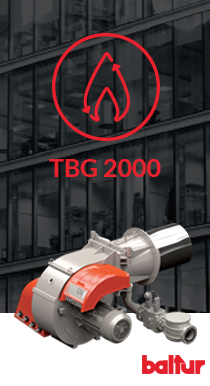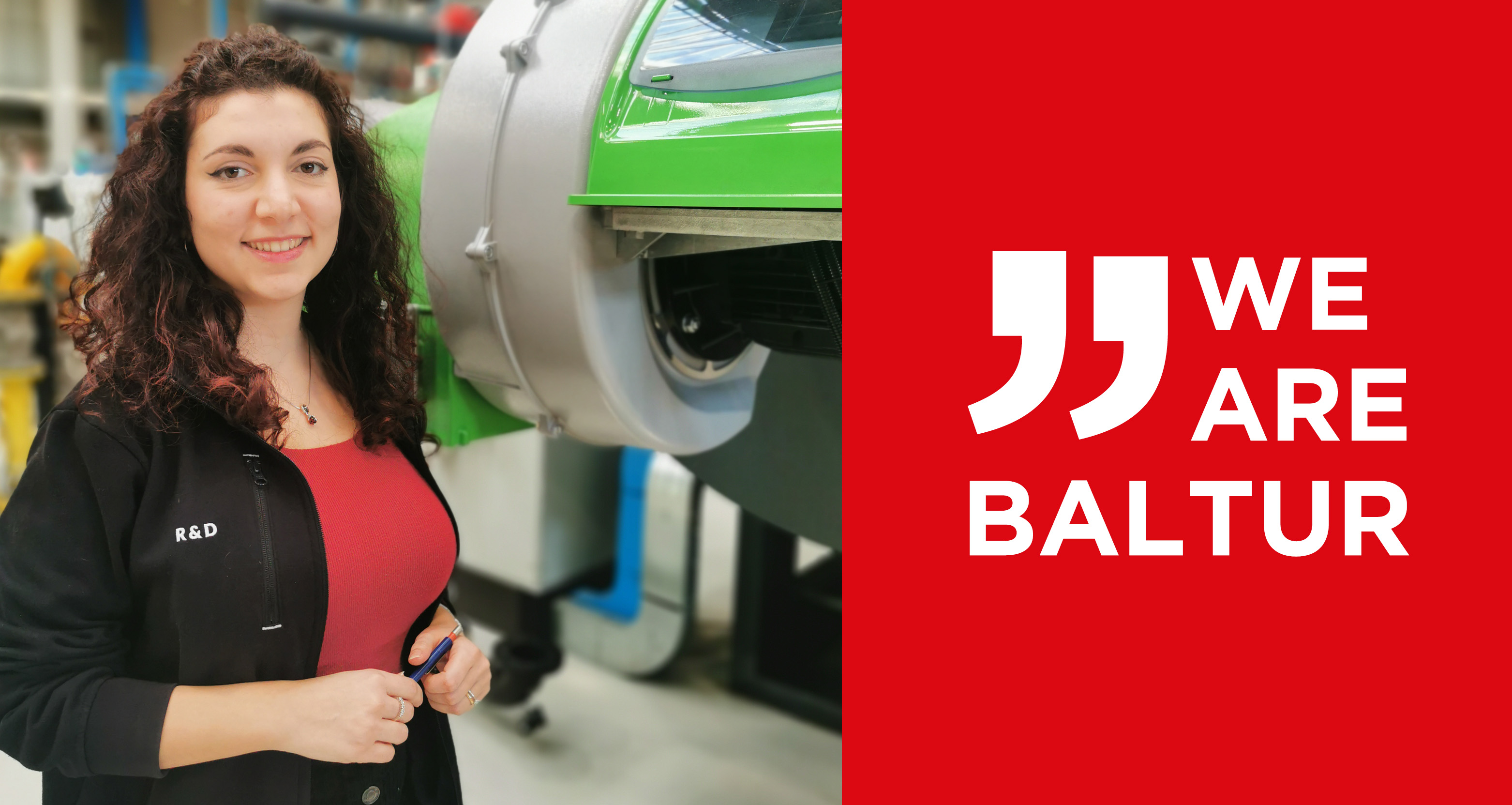
News
Baltur's new patented combustion technology
Interview with Valentina Moccia, Mechanical Designer at Baltur
“I joined Baltur in the summer of 2017 as a Mechanical Designer, and in the summer of 2019 I was assigned my first project as team leader for the research, development and manufacture of a new series of burners - the future SLX - setting as a strategic goal the development of a new combustion technology that would guarantee very low NOx emissions: <50 mg/Nm3, without the use of FGR (flue gas recirculation).
We knew it was going to be a long and challenging project. The knowledge we had already acquired was not enough to achieve our goal”.
“The early stages were purely experimental (and the most fun in my opinion).
With the input from our more experienced colleagues, we developed various components of the combustion head and performed “cold” CFD (computational fluid dynamics) simulations - without simulating combustion processes - to try to determine the gas and air flow rates.
The aims of this phase were to:
- promote internal flue gas recirculation directly in the combustion chamber as much as possible
- increase the turbulence of the fuel and comburent streams
- divide the “combustion head” into two lines: a stable and robust “flame root” and one to complete the combustion process
- decouple the gas supply to make the two lines independent of each other
Once a satisfactory geometry was found, the first prototype and initial tests in the Burner Laboratory were carried out.
Again, the synergy and contribution of all the technicians in the Laboratory were crucial for the development of this new technology.
We performed one test after another and made hundreds of new parts. First designed, then constructed in the prototype workshop, and finally tested.
After identifying an optimal solution, we focused on developing and defining the design of the head assembly in its details, with dedicated castings.
We carried out “hot” CFD simulations with the support of an external company - Enginsoft - to estimate temperatures, flame distribution and confirm the test data”.
“The combustion head research and development activity described above, in 2020 resulted in:
- the production of 3 prototype burners for 3 sizes of boilers
- the carrying out of two field tests and several in the laboratory on commercial boilers
Also of great importance was the patenting of this newly developed technology at the end of 2020.
In 2021, what is known as the flow of operational activities for the design and development of a new product began, identified by various stages that the team leader must follow to obtain authorisation for sale and the launch of series production”.
TBG SLX: Burners with the lowest emission class in Europe
“This series is called TBG SLX and the first 3 models, derived from the 3 prototypes mentioned before, were approved in the second half of 2021 with the lowest European emission class: class 4 according to EN 676 (NOx <60 mg/kWh).
Their production started at the end of 2021.
These major, innovative features have been explored in more detail in the article Baltur Super Low NOX Burners.
I will briefly point them out:
-
New combustion head design with dual fuel distribution system and geometry that boosts flue gas recirculation within the combustion chamber
-
Independent management and regulation of gas flows with two different supply systems
The primary applications are industrial and heating boilers. They also perform very well in flame inversion boilers, where other burners struggle with emissions”.
What do you appreciate most about Baltur and your department in particular?
“The family environment, the solidarity and synergy between colleagues within the entire R&D department, and the collaboration between the various departments.
In R&D we create the products that make and will make the company thrive, which is why I think the role of the designer and team leader is an important one, to be taken seriously and responsibly”.
What are the challenges you enjoy most about your job?
“Researching new technologies to make burners more efficient in terms of emissions, as well as easy to install and maintain”.


 Burners
Burners

 Websolute
Websolute